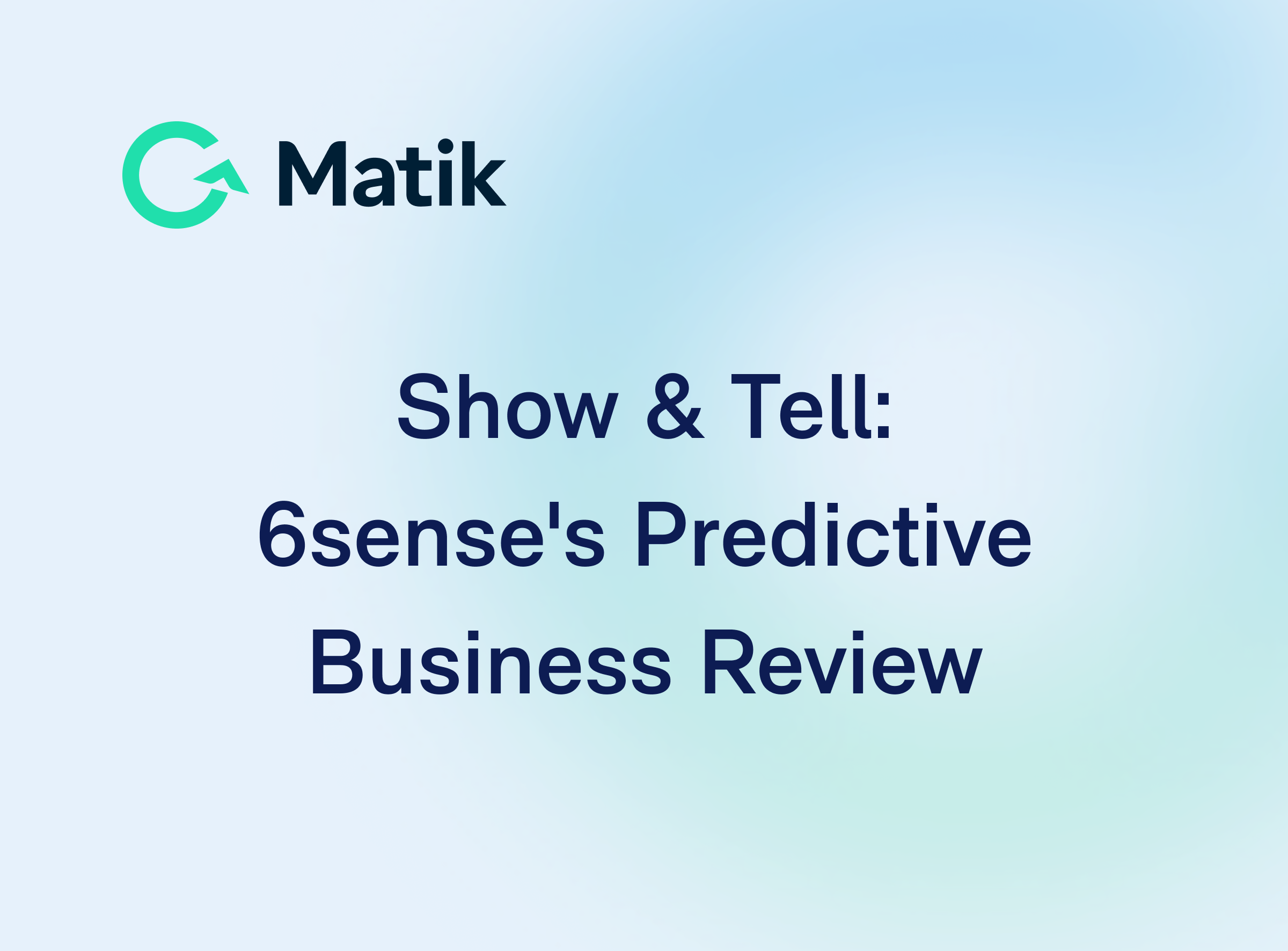Join Our Newsletter
You know how satisfying it feels when you've put together a good presentation. Unfortunately, the process is often tedious and takes significant time to build from beginning to end. Fortunately, we have two things here to help. One, Matik. Two, this blog post on how to build effective presentations. Check out these top five must-do's for the next time you put together a slide deck.
Less Text, Clearer Takeaways

Size-8 font text boxes don't belong in your presentation. If you're jam packing all of your speaker notes in your slide, then why do you need to present at all? Focus on the so-what and the central points on each slide and avoid the eye straining minutia. Ask yourself: if someone saw this slide without much context, would they understand the takeaway? If you're worried about your slide missing information that likely means you should be breaking it up into smaller concepts and more slides.
Less Data, More Insights

Once you have your claws in that good data, you don't want to let it go. I've been there. You want to squeeze in every last data point to provide evidence for your product's success. Unfortunately, this is not a winning strategy as you're more likely to alienate and overwhelm your audience with data paralysis than delight them. Insights turn data into action. With insights you highlight the why in the data instead of using loosely to defend against any objections. Make sure you have plenty of the former and less of the latter.
A Simple Color Palette

Not the most topical reference, but Marie Kondo's quote,"The best way to find out what we really need is to get rid of what we don't," is something to consider as much for your presentations as for your closet. With corporate brand themes so important to presentations these days, you would think color bombs would be less of an issue. A pro tip from a friend is to finish your slide design with no colors and then one by one add your brand colors to elements you'd like to highlight.
Data Viz for Dummies

As a former data analyst, I have been long attracted to complex and unique visualizations. Unfortunately for us data viz explorers, there are diminishing returns; the fancier you get, the higher risk of losing your audience. Keep it simple. Often times those classic charts (bar, column, line) are exactly what you need to tell a story with your data. Ask yourself: are you clarifying the takeaways on your slide or are distracting from them? There's plenty of time for clever visualizations during the exploration phase of your analyses.
The Three-Act Structure

The Three-Act structure is the most common narrative convention in fiction. It divides a story into three parts from setup to confrontation to resolution. It works just as well in presentations as it does in fiction, and it works entirely because it is a convention. Your audience is here to understand the points which you are trying make and leave with an understanding of the next steps from those points. If you find your presentation going on too many detours, you risk losing the central takeaways and drifting off into many, way too many, spin-off meetings.
There are many ways customers presentations can go off the rails and only a few ways they can be successful. Focus on the strategies above and you'll start to reap the rewards plus have that nice feeling that you've just built something well.
---
Interested in learning more about Matik? Request a Demo















